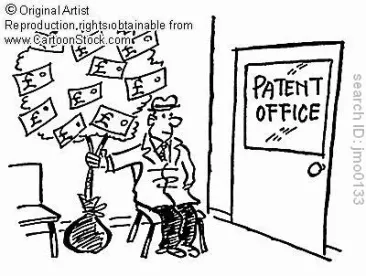Over the past three years, the number of Post-Grant Proceedings continues to rise. In 2012, the number of AIA post-grant petitions filed – including IPRs, PGRs and CBMs - was less than 50 per month. During 2013, that number grew to about 100 filings per month. In 2014, almost every month had over 150 petitions filed and that number reached almost 200 filings in several months.
Not only is the number of post-grant petitions rising, but the PTAB rate of granting these petitions has been very high. For example, in 2014, the PTAB instituted trials on 75% of the IPR petitions filed. Thus far in 2015, the PTAB has instituted trials on 74% of the IPR petitions filed. As such, patent applicants are learning that not only do they need to overcome the obstacles put forth in their way during prosecution with the USPTO, but they must also prepare for third parties potentially attacking a granted patent in a post-grant proceeding. Accordingly, patent practitioners should draft and prosecute their applications to better position themselves from any post-grant attacks.
For example, if the PTAB is using the broadest reasonable interpretation in light of the specification for claim construction, there is the chance that a broader construction can trigger prior art references that otherwise would not have been used. Practitioners should make every effort while drafting a patent application to clearly define, without any ambiguity, terms of the claim language in the specification. Practitioners should also make sure to consistently use terms according to their definition. While drafting the application, practitioners have the opportunity to mold and direct the claim language and meanings before a post-grant petitioner attempts to counter a term’s meaning using the broadest reasonable interpretation during a post-grant proceeding. Practitioners should thus take advantage of this during drafting of the application to either defeat post-grant petitions or to put themselves in a better position to counter-attack any post-grant petitions that may be filed against a granted patent.
Further, because there are various strategical advantages for post-grant petitioners, patent practitioners should consider strengthening their patentability positions through the use of declarations during prosecution. That is, a party challenging a granted patent in a post-grant proceeding has the advantage of planning an attack through the use of expert witnesses. Once a petition is filed by a party challenging a patent, the patent owner only has three months to file a preliminary response and is not allowed to provide new testimonial evidence prior to post-grant institution. If the patent owner has filed a declaration during prosecution of the application, however, then the patent owner may use this evidence in order to persuade the PTAB that there is not a substantial likelihood that at least one claim of the patent will be unpatentable. For example, if a patent owner has filed a declaration to overcome a section 112 or section 103 rejection, the patent owner may rely on such a declaration to convince the PTAB to avoid instituting a post-grant proceeding. Thus, the patent owner can better position themselves to avoid the post-grant proceeding whereas in the absence of a declaration, the patent owner may not be afforded such an opportunity. It is important to keep in mind, however, that any declarations submitted during prosecution are valid and are not defective in any manner, as this could lead to a basis for instituting an IPR.
As the post-grant proceeding process currently favors institution of PTAB trials, it is important for patent practitioners to draft and prosecute patent applications with long-term objectives in mind in order to better place themselves in a position to either avoid institution of a post-grant proceeding or to be successful in defending their patents should a PTAB trial arise.




 />i
/>i
